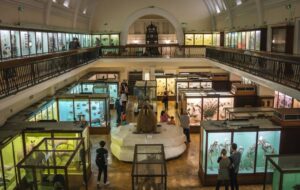The post Mojave Autumn at Clark County Wetlands Park appeared first on Travel Nevada.
As summer loosens its clutch on the Las Vegas Valley, autumn emerges in muted colors at Clark County Wetlands Park (CCWP).
You may have to look a little closer to see it, but the changing season unfolds with the yellowing of heart-shaped cottonwood leaves. Pale pygmy blue butterflies—one of the smallest butterflies in the world—emerge to mate and lay eggs, and shorebirds in salt and sandy hues stop along the Las Vegas Wash as they migrate to wintering grounds in Central and South America.
To really appreciate autumn here, you must set aside your forest-centric views of the season. There won’t be many moody skies or dramatic canopies of crimson and auburn. Instead, the sky is blue as ever, and golden-brown mesquite seed pods blanket the desert floor—providing a bountiful harvest for the park’s wildlife.
Although there are not huge piles of leaves to jump in, the park’s leaf litter is still worth celebrating. Leaves from the cottonwoods, willows, and mesquites create a layer of nutrient-rich material that nourishes the soil and provides habitat for native bees and butterfly larvae.
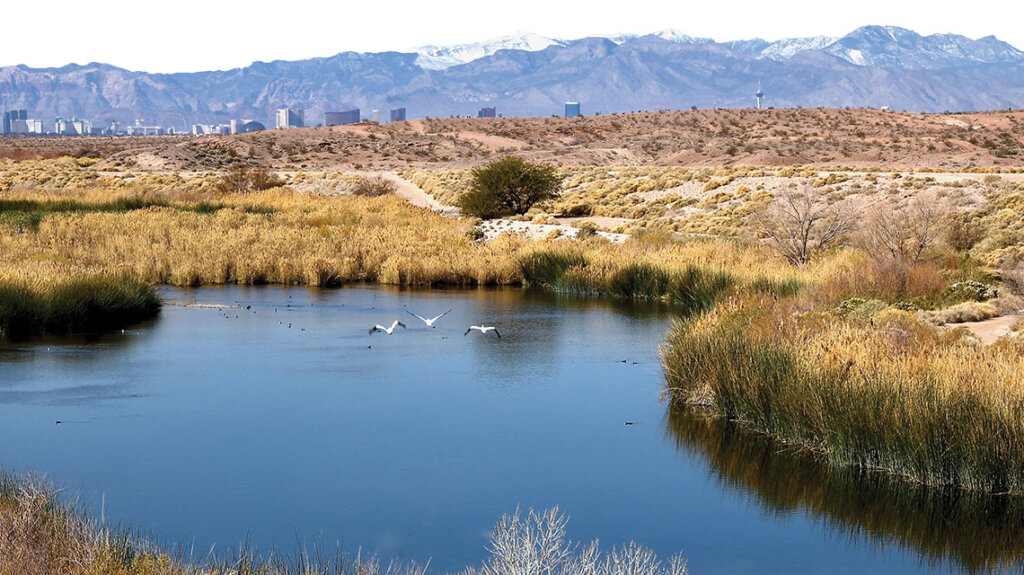
City Green Space
CCWP provides critical habitat for wildlife in an urban sprawl. Residents here include more than 70 species of mammals (including elusive beavers and raccoons), reptiles, amphibians, and at least 310 species of birds.
The 2,900-acre park—which features an information kiosk, exhibit gallery, and gift shop—is only a small fraction of the Las Vegas Wash, an “urban river” tributary that channels treated wastewater, shallow groundwater, urban runoff, and stormwater back into Lake Mead. The park’s paved and hard-packed trails—part of a 34-mile trail system—crisscross through stands of phragmites, cottonwood groves, and mesquite bosques.
The park is a sanctuary for plants, animals, and people alike. It provides residents and visitors with a place to slow down, observe nature, and discover the changing of the seasons—Mojave style.
Mesquite Feast
One of the most iconic trees at CCWP is the mesquite. This unassuming tree provides food for many of the park’s wildlife. But with so much flora here, how do you know the thorny plant you’re looking at is a mesquite? First, are you in the right habitat? Mesquite trees grow in areas that look bare and dry, largely because their tap roots—which can stretch 45 feet deep—are able to access groundwater. At CCWP, the aptly named Mesquite Way path winds you through the right plant zone.
Another sign you’re in the right place are the dense clumps of desert mistletoe hanging off the tree branches in dark red masses. Birds like northern mockingbirds and phainopeplas often perch and call to one another as they defend their mistletoe berries, a favorite food that will get them through the oncoming winter.
Autumn is a great time to tell mesquite species apart. Screwbean mesquites have coiled, corkscrew- shaped seed pods, whereas honey mesquite pods are long and crescent shaped. Both can have anywhere between 2-15 seeds, making them an important food source for wildlife after the scarcity of summer.
A sure sign of fall, even if it’s still hot outside, is that mesquites have dropped their seed pods after growing them in the heat of summer. After hitting the ground, the pods get scattered by hungry animals.
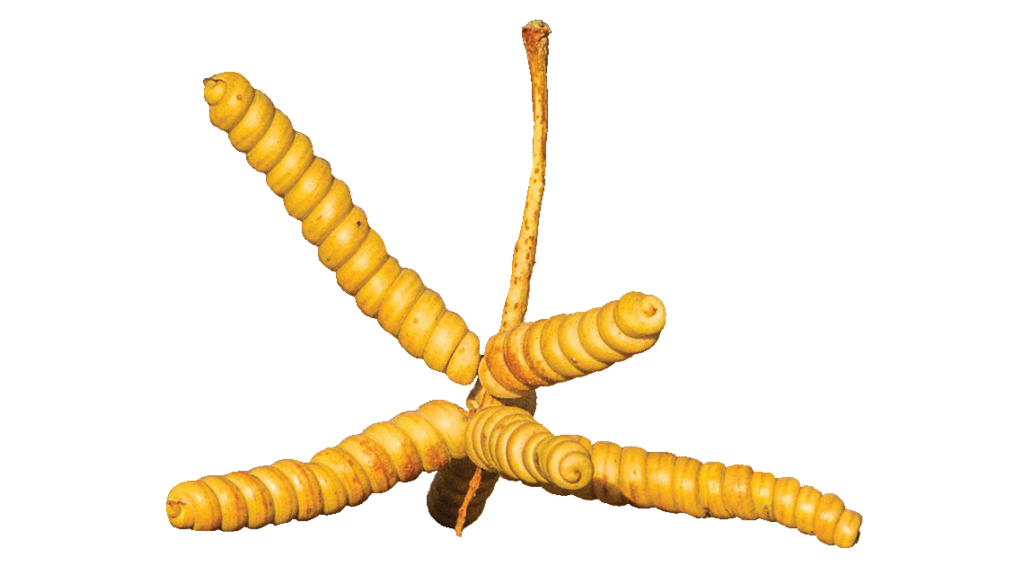
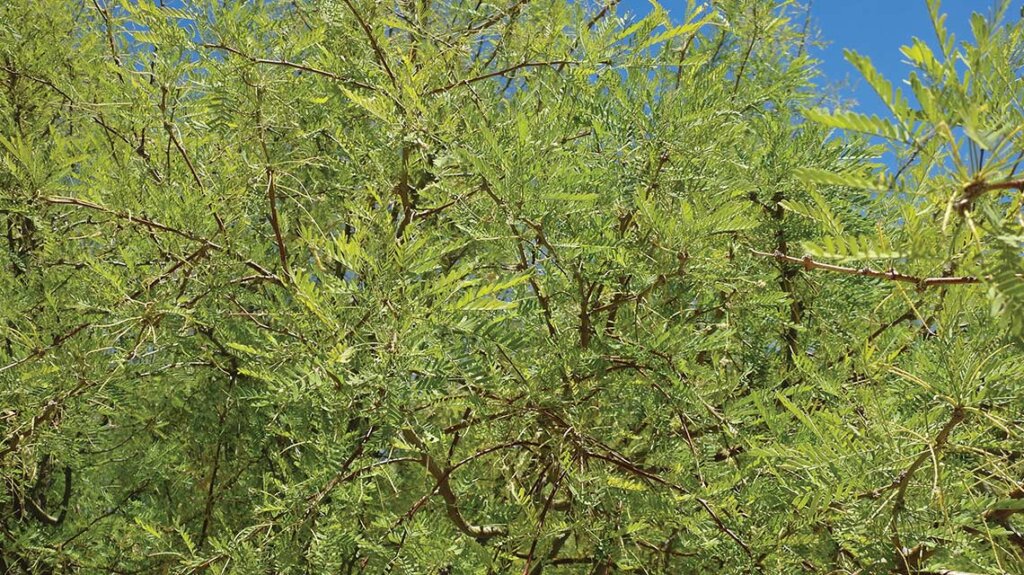
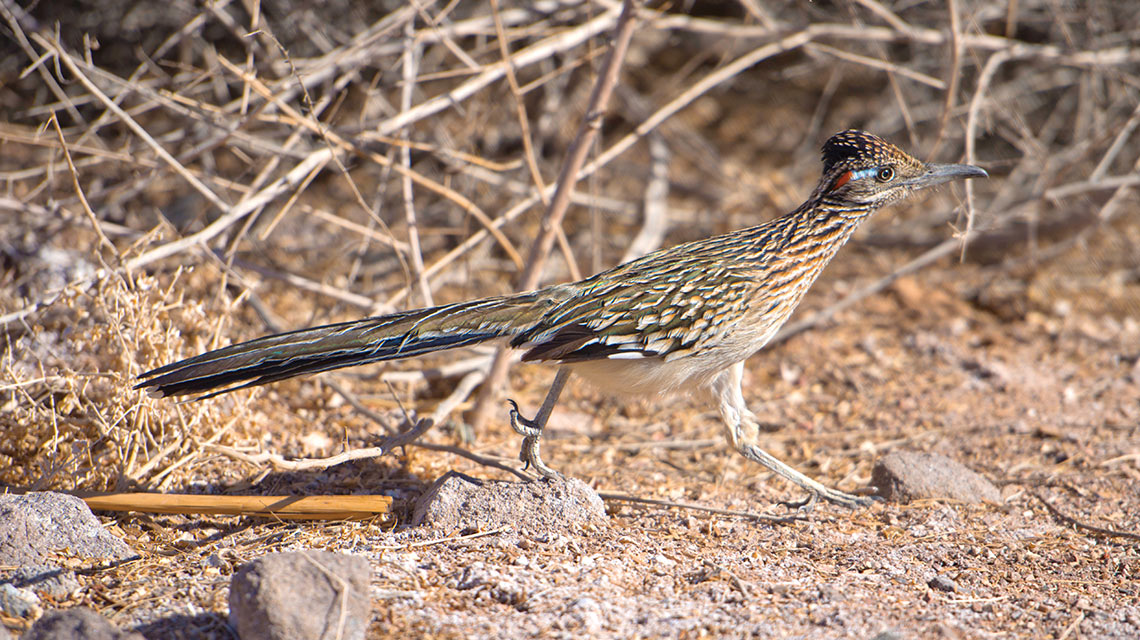
At the bottom of the food chain, desert cottontails use their sharp teeth to gnaw open the pods and grind down the nutritious seeds. Coyotes, a common sight at the park, eat the cottontails, but also happily eat mesquite seeds. A quick look at coyote scat along the trails will tell you whether they’ve been gobbling up the hard-to-digest seed. And because nothing goes to waste in nature, Gambel’s quail zigzag through the bosque looking for a stray snack, even eating the aforementioned undigested fare to get their share of the mesquite feast.
You can also find a rich array of life by looking through the mesquite branches, which will be leafless in the wintertime. You may spot the nests of verdins—a small songbird—or lizards camouflaging into the bark. If you wait long enough, a roadrunner is sure to investigate as it prowls the thickets for lizards and large insects to eat.
Park Adventures
To fully experience the diversity of autumn in the park, venture over to Cottonwood Pass, where you may see great horned owls, Cooper’s hawks, or northern flickers. You can also go to the Big Weir Bridge for a stunning overlook of the Las Vegas Wash and the city skyline and search for wildlife along the water.
By September, migrating shorebirds feed in areas with shallow water, and by November, the first of the migratory waterfowl begin to trickle into the Las Vegas Valley for the winter. Along the trails, big saltbush and four-winged saltbush starts producing clumps of seeds, which draw in a variety of birds like finches and sparrows.
The mosaic of habitats at CCWP is not just beneficial for wildlife, but for people, too. Walking through the winding trails, you may feel like you’re a world away from Las Vegas when you’re just at the edge of the metropolis.
Travel Nevada Pro Tip
Need help navigating? Download the Wetlands Park Navigator app for maps, tours, and more CCWP info.
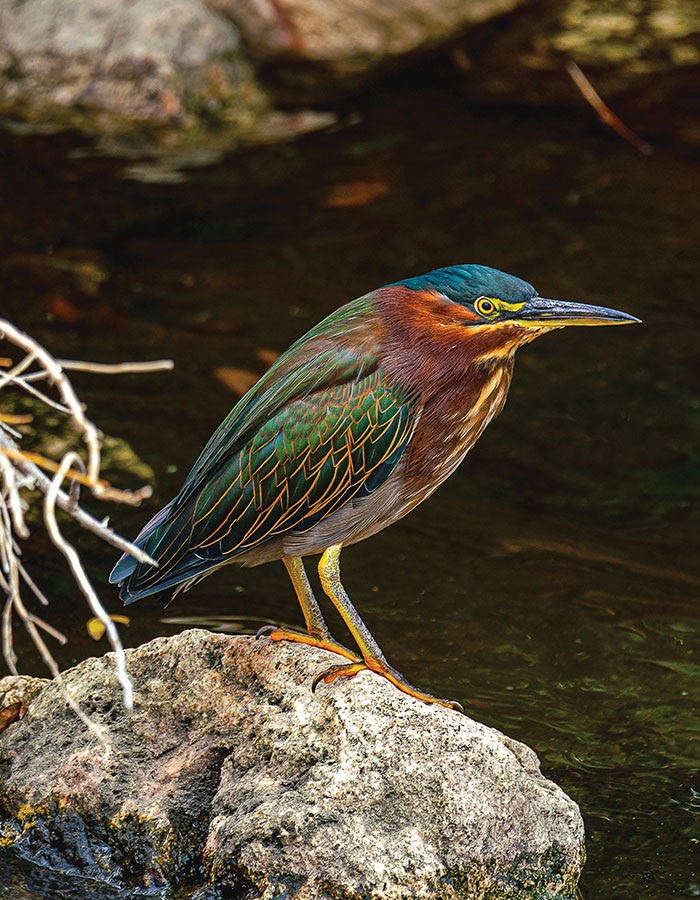
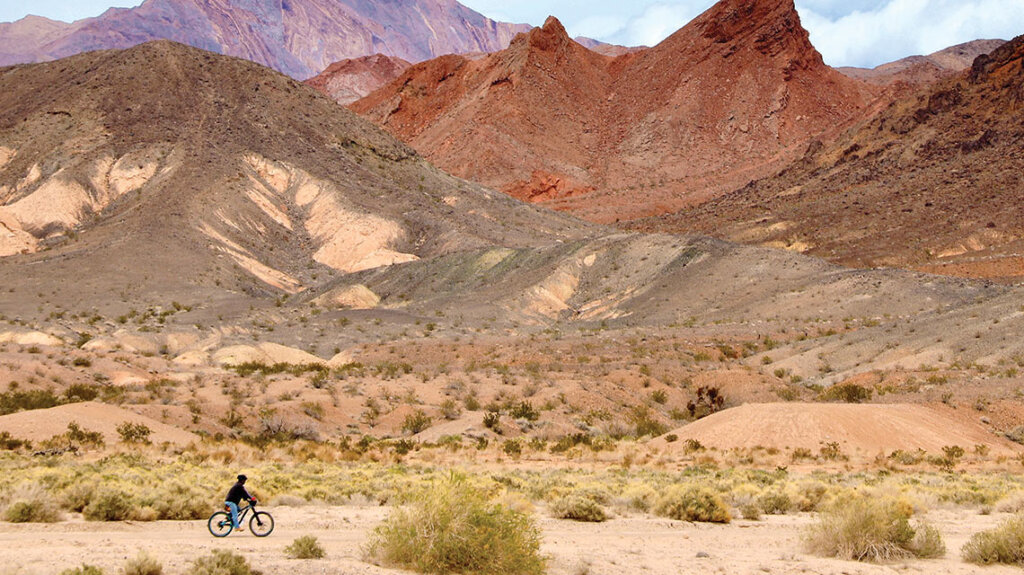
CCWP has an active calendar of public events and volunteer opportunities. Its fall programming—available online—includes nature walks that focus on the park’s stunning biodiversity (including bird and plant walks) as well as activities for kids and art events. The website also includes information on the park’s pet-friendly areas, biking trails, and much more.
Remember, autumn comes slowly to the desert. But it does come. Slow down and see what life you can find. CCWP has miles of trails to explore, and beyond the nature preserve, you can recreate at places like Duck Creek Trailhead, Pabco Trailhead, and the Wetlands Loop Trailhead. What will you discover this fall?
The post Mojave Autumn at Clark County Wetlands Park appeared first on Travel Nevada.
This article: Mojave Autumn at Clark County Wetlands Park has been curated from our friends at Travel Nevada and the original in it's entirety can be found here: https://travelnevada.com/parks-recreational-areas/mojave-autumn-at-clark-county-wetlands-park/
